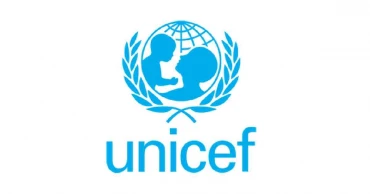Heatwaves
Cyclone, severe heatwaves likely in May
One or two depression may intensify into cyclones while multiple spells of heatwaves and nor’westers (Kalbaishakhi storms) are also likely to sweep Bangladesh this months, according to the Bangladesh Meteorological Department (BMD).
The BMD outlook, released Wednesday, warns that the Bay of Bengal may witness one to three low-pressure systems this month one or two of which may develop into depressions and potentially intensify into cyclonic storms.
It forecast two to three moderate to severe nor’westers in May along with three to five days of thunderstorms with hails.
It also predicted one or two sever heatwaves (Over 40 degrees Celsius) in parts of Bangladesh.
Night temperatures are expected to remain high throughout the month.
Besides, normal rainfall is expected in May, it said.
Isolated heavy showers could cause water levels in northern, northeastern, and southern rivers to rise temporarily.
River flow is otherwise likely to remain within normal limits, according to the forecast.
Temperatures likely to rise across country
May is typically one of the stormiest and second hottest months in Bangladesh, often marked by turbulent weather patterns.
In recent years, major cyclones hit Bangladesh in May.
Cyclone Mocha made landfall on May 14, 2023, while Cyclone Remal struck coastal areas on May 26, affecting many people in 19 districts.
7 months ago
Heatwaves to impact almost every child by 2050: UNICEF report
UNICEF, the UN Children's Fund, has warned that by 2050, nearly every child on earth would be affected by heatwaves, which have already become an inevitable health risk for many nations.
Today, 559 million children are already exposed to a high number of heatwaves, placing them on the front lines of climate change, the UN agency noted.
More than two billion youngsters are expected to be exposed to "more frequent, longer lasting, and more severe" heatwaves by the middle of this century.
“The climate crisis is a child rights crisis – and it is already taking a devastating toll on children’s lives and futures,” warned UNICEF Executive Director, Catherine Russell.
This year’s wildfires and heatwaves that have swept through India, Europe, and North America were “yet another sobering example of the impact of climate change on children”, she added.
New data from the agency published in its report on Tuesday, The Coldest Year Of The Rest Of Their Lives, underscores that young children face greater risks than adults when faced with extreme heat events.
This is because they are less able to regulate their body temperature compared to adults. The more heatwaves children are exposed to, the greater the chance of health problems including chronic respiratory conditions, asthma, and cardiovascular diseases.
Read: Supporting Mothers at Work: UNICEF joins hands with Bangladesh garment industry
“The world urgently needs to invest in building their resilience – and in adapting all the systems children rely on to meet the challenges of a rapidly changing climate,” UNICEF maintained.
This is regardless of whether average global temperatures rise by 1.7 degrees Celsius above pre-industrial levels if greenhouse gas emissions are low, or whether they rise by 2.4C, if emissions are high.
Protecting children from the escalating impacts of heatwaves should be a priority for all countries, UNICEF said, in a call for “urgent and dramatic emissions mitigation measures to contain global heating - and protect lives”.
Children in northern regions will face the most dramatic increases in high heatwave severity, while by 2050, nearly half of all children in Africa and Asia will face sustained exposure to extreme high temperatures over 35C (95F), UN Children’s Fund data showed.
“This will have a devastating impact on children,” said Vanessa Nakate, climate activist and UNICEF Goodwill Ambassador. “The more frequent, longer lasting and more severe heatwaves children are exposed to, the greater the impacts on health, safety, nutrition, education, access to water and future livelihoods.”
“Almost every country is experiencing changing heatwaves,” UNICEF said. “What each government does now will determine the survival of those least responsible for this crisis – our children and young people.”
3 years ago
Deadly flooding, heatwaves in Europe, highlight urgency of climate action: WMO
Heavy rainfall that has triggered deadly and catastrophic flooding in several western European countries, is just the latest indicator that all nations need to do more to hold back climate change-induced disasters, the World Meteorological Organisation (WMO) said.
The agency said that countries including Belgium, Germany, Luxembourg and the Netherlands had received up to two months’ rain in two days from 14 to 15 July, on ground that was "already near saturation."
Read: Europe floods shows need to curb emissions, adapt
Photos taken at the scene of some of the worst water surges and landslides show huge, gaping holes where earth and buildings had stood until mid-week, after media reports pointed to well over 100 confirmed fatalities in Germany and Belgium on Friday morning, with an unknown number still missing across vast areas.
"We’ve seen images of houses being swept away, it’s really, really devastating," said WMO spokesperson Clare Nullis adding that that the disaster had overwhelmed some of the prevention measures put in place by the affected developed countries.
In a statement issued by his Spokesperson, the UN Secretary-General António Guterres, said he was saddened by the loss of life and destruction of property. "He extends his condolences and solidarity to the families of the victims and to the Governments and people of the affected countries."
Read: Death toll from Europe floods tops 150 as water recedes
The UN chief said the UN stood ready to contribute to ongoing rescue and assistance efforts, if necessary.
"Europe on the whole is prepared, but you know, when you get extreme events, such as what we’ve seen - two months’ worth of rainfall in two days - it’s very, very difficult to cope," added Ms. Nullis, before describing scenes of "utter devastation" in Germany’s southwestern Rhineland-Palatinate state, which is bordered by France, Belgium and Luxembourg.
Highlighting typical preparedness measures, the WMO official noted In Switzerland’s national meteorological service, MeteoSwiss, had a smartphone application which regularly issued alerts about critical high-water levels.
The highest flood warning is in place at popular tourist and camping locations including lakes Biel, Thun and the Vierwaldstattersee, with alerts also in place for Lake Brienz, the Rhine near Basel, and Lake Zurich.
Read: Rescuers race to prevent more deaths from European floods
In contrast to the wet conditions, parts of Scandinavia continue to endure scorching temperatures, while smoke plumes from Siberia have affected air quality across the international dateline in Alaska. Unprecedented heat in western north America has also triggered devastating wildfires in recent weeks.
"Certainly, when you see the images we’ve seen in Germany, Belgium and the Netherlands this week it’s shocking, but under climate change scenarios, we are going to see more extreme events in particular extreme heat," the WMO official added.
Concerns persist about rising sea temperatures in high northern latitudes, too, Ms. Nullis said, describing the Gulf of Finland in the Baltic Sea at a "record" high, "up to 26.6C on 14 July", making it the warmest recorded water temperature since records began some 20 years ago.
Echoing a call by UN Secretary-General António Guterres to all countries to do more to avoid a climate catastrophe linked to rising emissions and temperatures, Ms. Nullis urged action, ahead of this year’s UN climate conference, known as COP26, in Glasgow, in November.
"We need to step up climate action, we need to step up the level of ambition; we’re not doing nearly enough to stay within the targets of the Paris Agreement (on Climate Change) and keep temperatures below two degrees Celsius, even 1.5C, by the end of this century."
4 years ago
Mild heat weave sweeps parts of country
A mild heat wave is sweeping Dhaka, Rajshahi, Khulna and Barishal divisions, said Bangladesh Metrology Department (BMD).
Besides, mild heat waves are also sweeping the regions of Rangamati, Chandpur, Maizdicourt and Sayedpur and it may continue, said the Met office in its regular bulletin on Sunday.
Light to moderate rain or thundershowers accompanied by temporary gusty or squally wind is likely to occur at a few places over Mymensingh, Sylhet, Rajshahi and Dhaka divisions and at one or two places over Rangpur and Chattogram, divisions with moderately heavy falls at places over the country.
Read: Rain brings relief to Dhaka dwellers
Weather may remain mainly dry elsewhere over the country.
In a regular forecast, it said the day temperature may rise slightly and night temperature may remain nearly unchanged over the country.
The maximum temperature of the country was recorded at 38.0 degrees Celsius in Jashore on Sunday.
4 years ago






